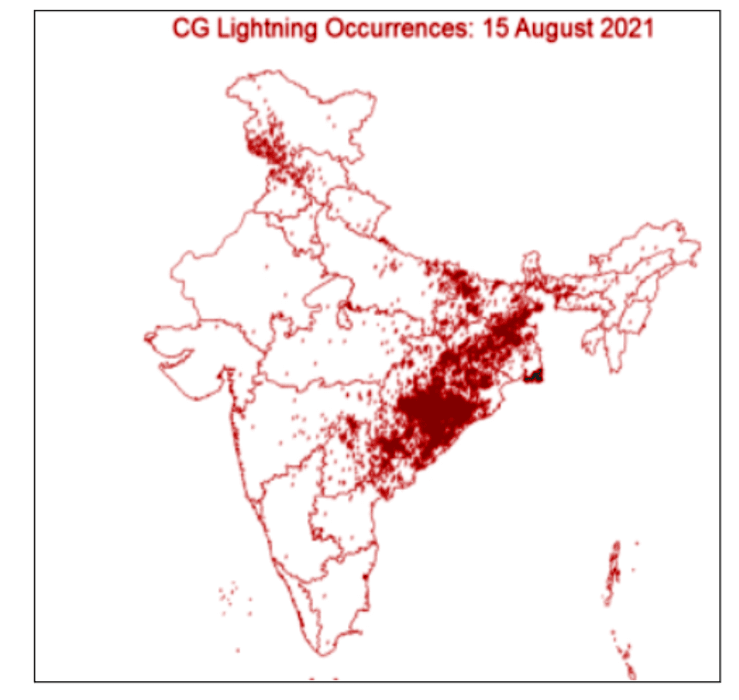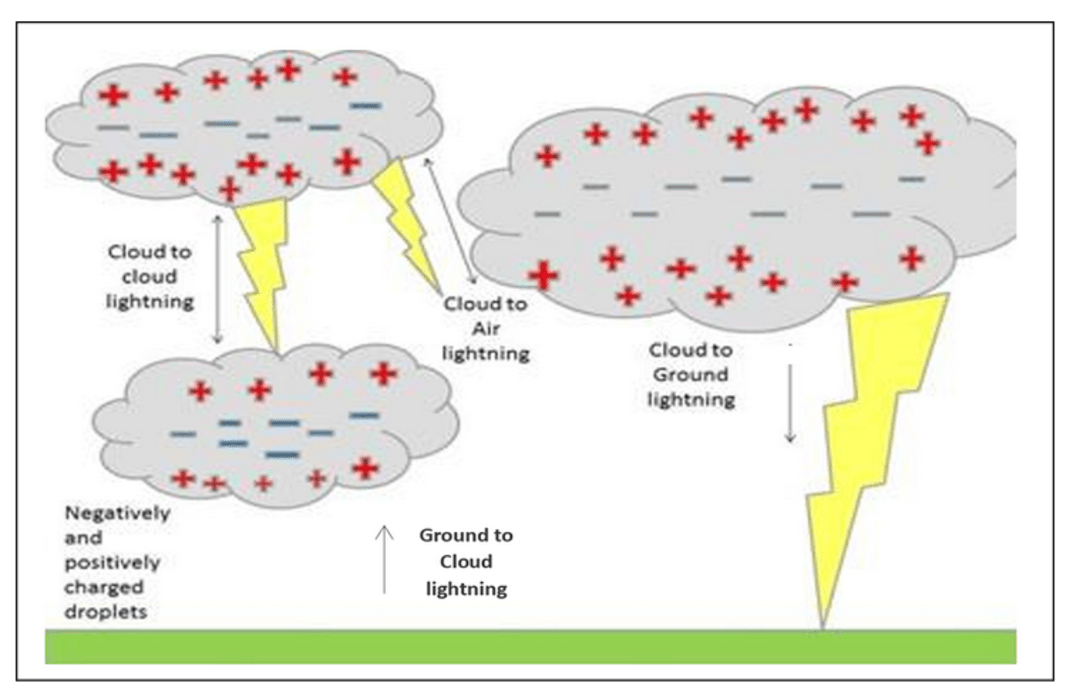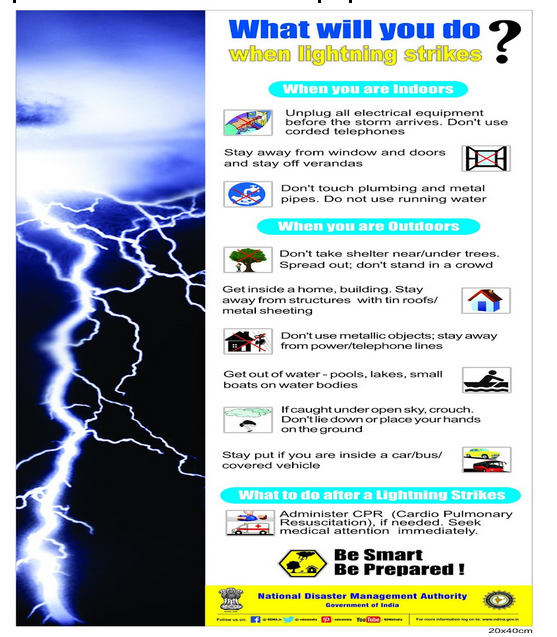News Excerpt:
Odisha plans to plant around 1.9 million palm trees and has implemented restrictions on cutting existing palm trees.
Lightning and associated threat:
- Lightning is a very rapid and massive discharge of electricity in the atmosphere, some of which is directed towards the Earth’s surface.
- Cloud to Ground (CG) lightning causes death and destruction of property.
-
- Lightning was responsible for 35.8 percent of the 8,060 accidental deaths in India attributable to natural forces in 2022, according to the latest National Crime Record Bureau (NCRB) report.
- These discharges are generated in giant moisture-bearing clouds that are 10-12 km tall.
- The base of these clouds typically lies within 1-2 km of the Earth’s surface, while their top is 12-13 km away. Temperatures towards the top of these clouds are in the range of minus 35 to minus 45 degrees Celsius.

Cloud formation and charge build up in clouds:
- As water vapour moves upward in the cloud, the falling temperature causes it to condense. Heat is generated in the process, which pushes the molecules of water further up. As they move to temperatures below zero degrees Celsius, the water droplets change into small ice crystals. They continue to move up, gathering mass, until they are so heavy that they start to fall to Earth.
-
- This leads to a system in which, simultaneously, smaller ice crystals are moving up and bigger crystals are coming down causing collisions between them.
- Collisions trigger the release of electrons, a process that is very similar to the generation of sparks of electricity. As the moving free electrons cause more collisions and more electrons, a chain reaction ensues.
- This process results in a situation in which the top layer of the cloud gets positively charged, while the middle layer is negatively charged.
- The electrical potential difference between the two layers is huge generally in the order of a billion to 10 billion volts. In very little time, a massive current, of the order of 100,000 to a million amperes, starts to flow between the layers.
- An enormous amount of heat is produced, and this leads to the heating of the air column between the two layers of the cloud.
- This heat gives the air column a reddish appearance during lightning. As the heated air column expands, it produces shock waves that result in thunder.

Importance of Palm Trees in Lightning Protection
- Palm trees act as natural conductors during lightning strikes, preventing loss of life.
-
- The Odisha government decided in September 2023 to undertake extensive palm tree planting and protect existing ones.
- Permission must now be obtained from the forest department to cut palm trees on private land
- Government emphasised that strict action would be taken against those violating the order.
- While the restriction on cutting palm trees is seen as a positive step, some experts question its effectiveness.
-
- It takes around 20 years for a palm tree to become fully grown and effectively absorb lightning.
Lightning-Related Casualties in Odisha:
- Odisha has witnessed an average of 300 lightning-related deaths annually, with a total of 2,058 deaths from 2018-19 to 2022-23.
- Lightning strikes have been declared a state-specific disaster in Odisha since 2015, with the government providing an ex-gratia of Rs 4 lakh to the family of the deceased.
Conclusion
The Odisha government’s initiative to plant palm trees and restrict their cutting is a step towards reducing lightning-related deaths. However, the long-term effectiveness of this measure remains to be seen, as experts call for broader strategies to protect people from the dangers of lightning.
|
NDMA guidelines on lightning
Educating the public on how to respond safely to lightning storms is crucial. Using social media platforms to deliver warnings and safety tips can increase awareness and preparedness.
|



